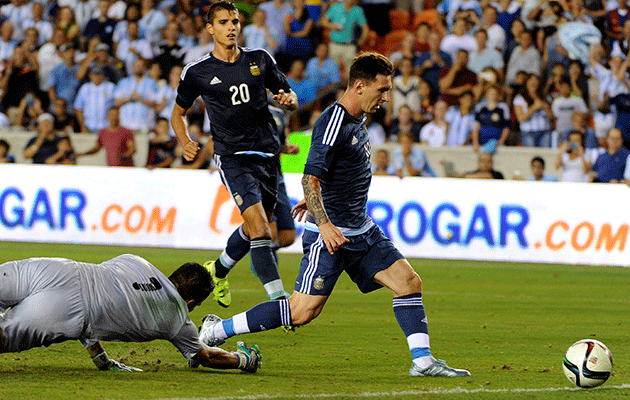One of the great things about South America’s marathon World Cup qualification campaign – the 2018 version gets underway in a month – is the absence of minnows. Bolivia, though, appear to be working hard to change this.
Three weeks ago this column outlined the soap opera that was bizarrely unfolding around the national team coach; Mauricio Soria had taken the team to the quarter finals of the Copa America, but was then embroiled in a row about bonus payments. Bolivian FA president Carlos Chavez decided to sack him, but found himself under investigation for corruption and behind bars before the process could be completed. With the clock ticking the Bolivian FA decided to ‘unsack’ Soria – who refused to be reprieved. So Spanish coach Miguel Angel Portugal was approached, flew in and named his squad for the September friendlies against Argentina and the Dominican Republic.
All of that, though, was mere prelude. The Bolivian League, the clubs’ organisation, refused to ratify Portugal and instead demanded a local coach. Eduardo Villegas of Bolivar was courted and set to be announced. But he chose to stay with his club, and so Julio Cesar Baldivieso, an attacking midfielder from the 1994 World Cup squad, was hurriedly appointed.
Baldivieso’s debut came last Friday against Argentina, in Houston in the USA. The new coach made it clear that this was a game he did not want, mainly because of the calibre of the opposition, but also because he would be taking a squad he had not chosen. The fact that some players were lacking visas for the US allowed him to make some changes – indeed a visa had to be quickly arranged for Baldivieso. And with some of the FA’s bank accounts blocked, captain Ronald Raldes had to loan them money in order to fulfil the fixture.
It was always unlikely, then, that Houston would provide a satisfactory lift off for Baldivieso’s reign, and so it proved. An experimental Argentina side cruised to a 7-0 win. The new coach described the performance as “a disgrace.” Bolivia have given a masterclass in how not to prepare for the most competitive World Cup qualification campaign on the planet.
It is worth remembering, though, that Bolivia’s preparation for the Copa America left a lot to be desired. Alone among the continent’s nations, they did not play a full international in the March FIFA dates, and their only tournament warm up was a hapless 5-0 defeat to Argentina a few days before kick off. And they do have the considerable advantage of playing their home matches in La Paz, at the extreme altitude of 3,600 metres.
They kick off in a month at home to Uruguay, who will be without Luis Suarez and Edinson Cavani, both suspended. Uruguay prepared on Friday with a game away to Panama – despite the absence of altitude it was clear that coach Oscar Washington Tabarez had an eye on next month’s competitive debut. With Martin Caceres returning from injury at left back, the defence held solid. And quick striker Jonathan Rodriguez came on in the second half and set up the only goal (scored by Cristian Stuani) – in La Paz his pace could be interesting on the counter attack.
The historical minnows in South America are Venezuela, a team which have taken huge strides in recent times. Two decades ago Venezuela were only making up the numbers. Now they go into World Cup qualification campaigns with a realistic chance of making it through for the first time.
In the 2010 qualifiers they fell 5 points short after 16 games, and their big problem was a lack of goals. Everyone else scored more than their total of 14. Their warm up game on Friday, then, was worrying. In Puerto Ordaz, their favoured venue, they dominated Honduras in the first half, and missed a penalty, but were picked off on the break to lose 3-0.







